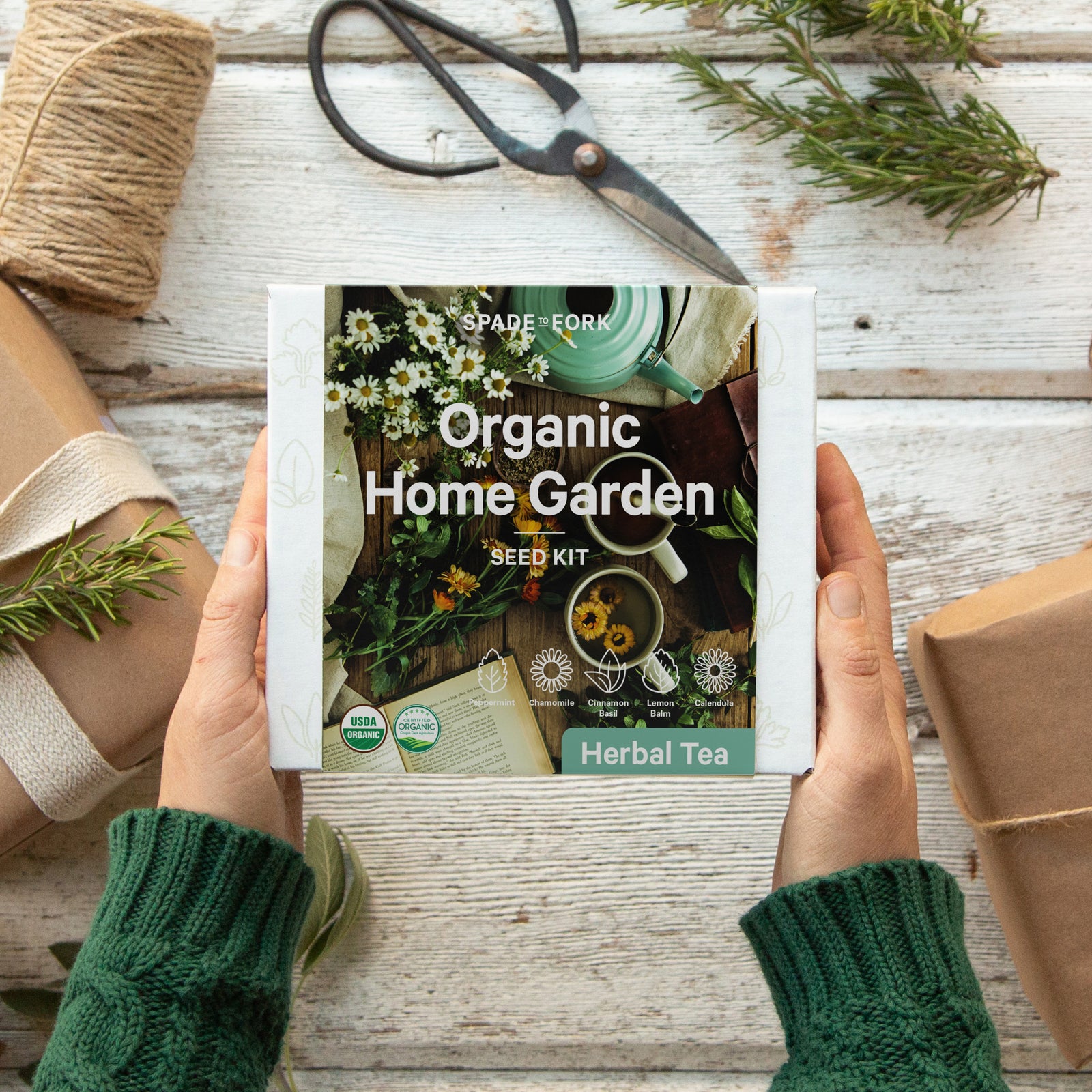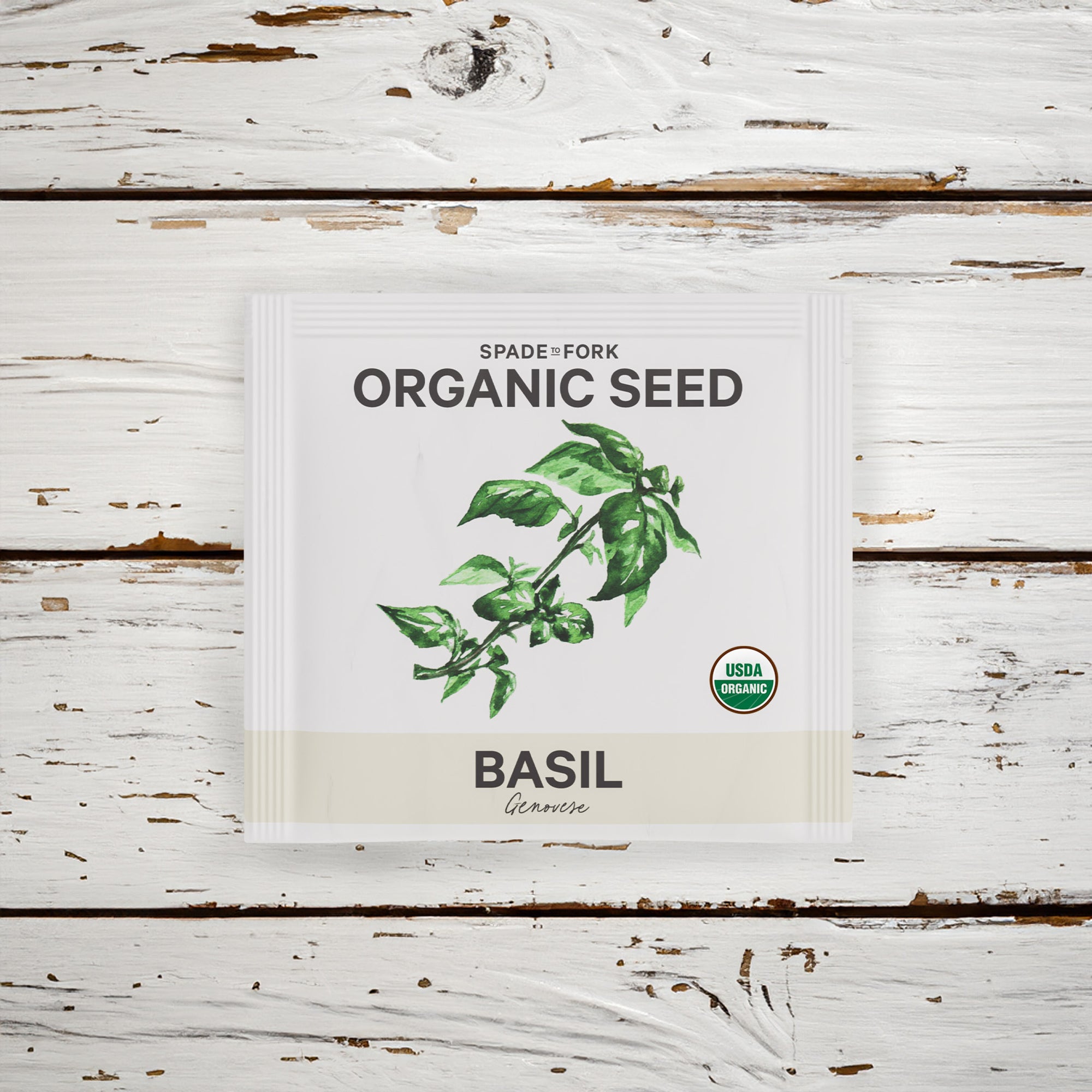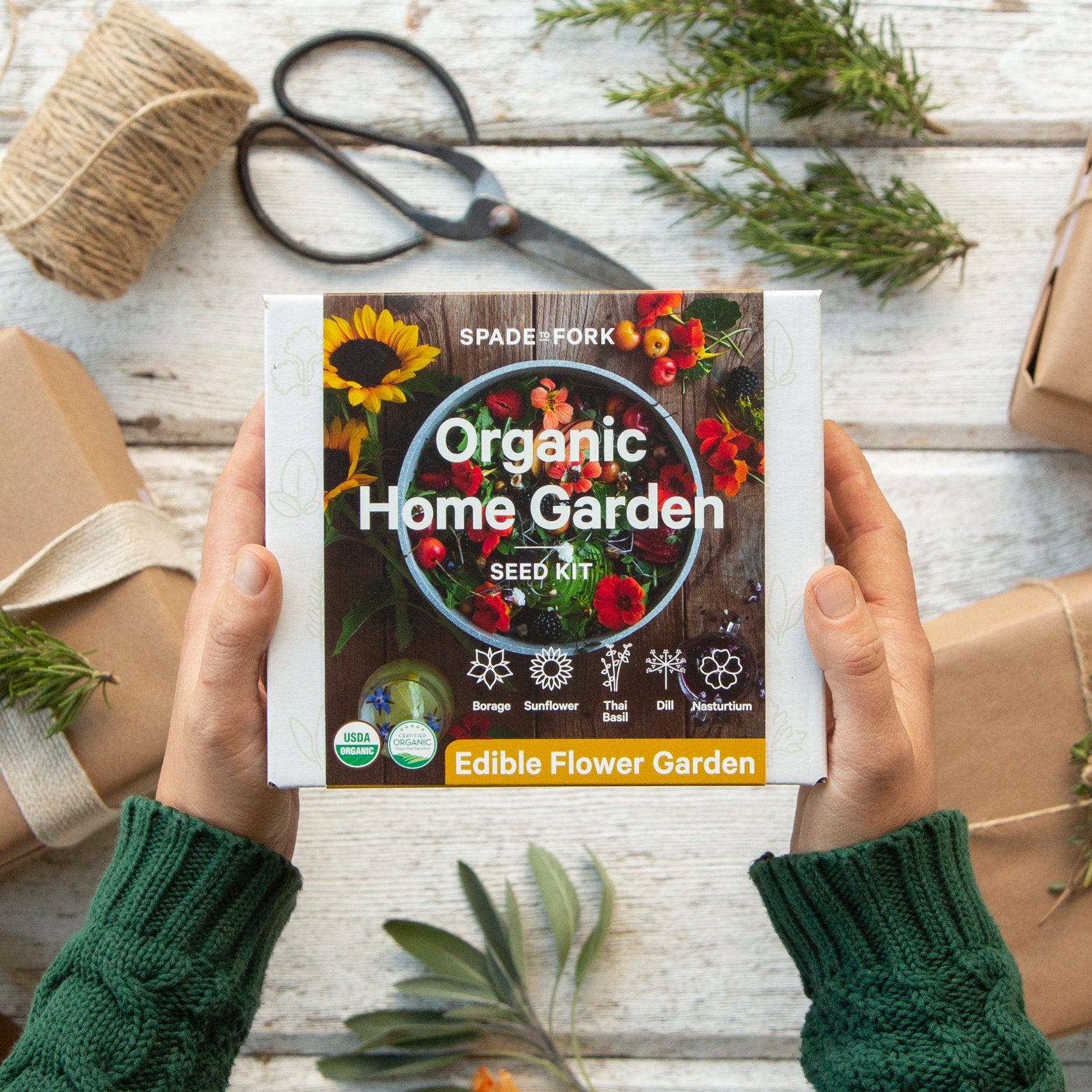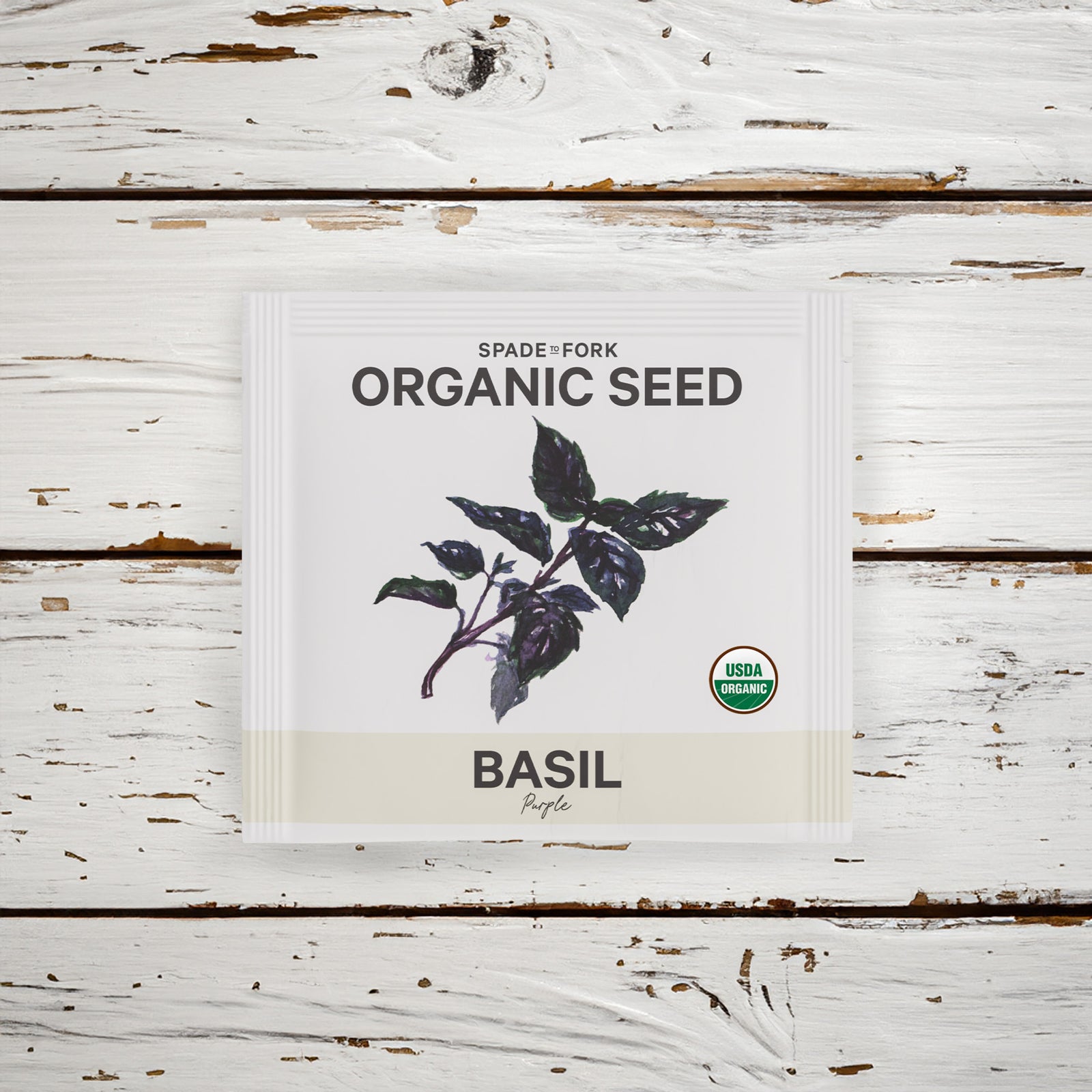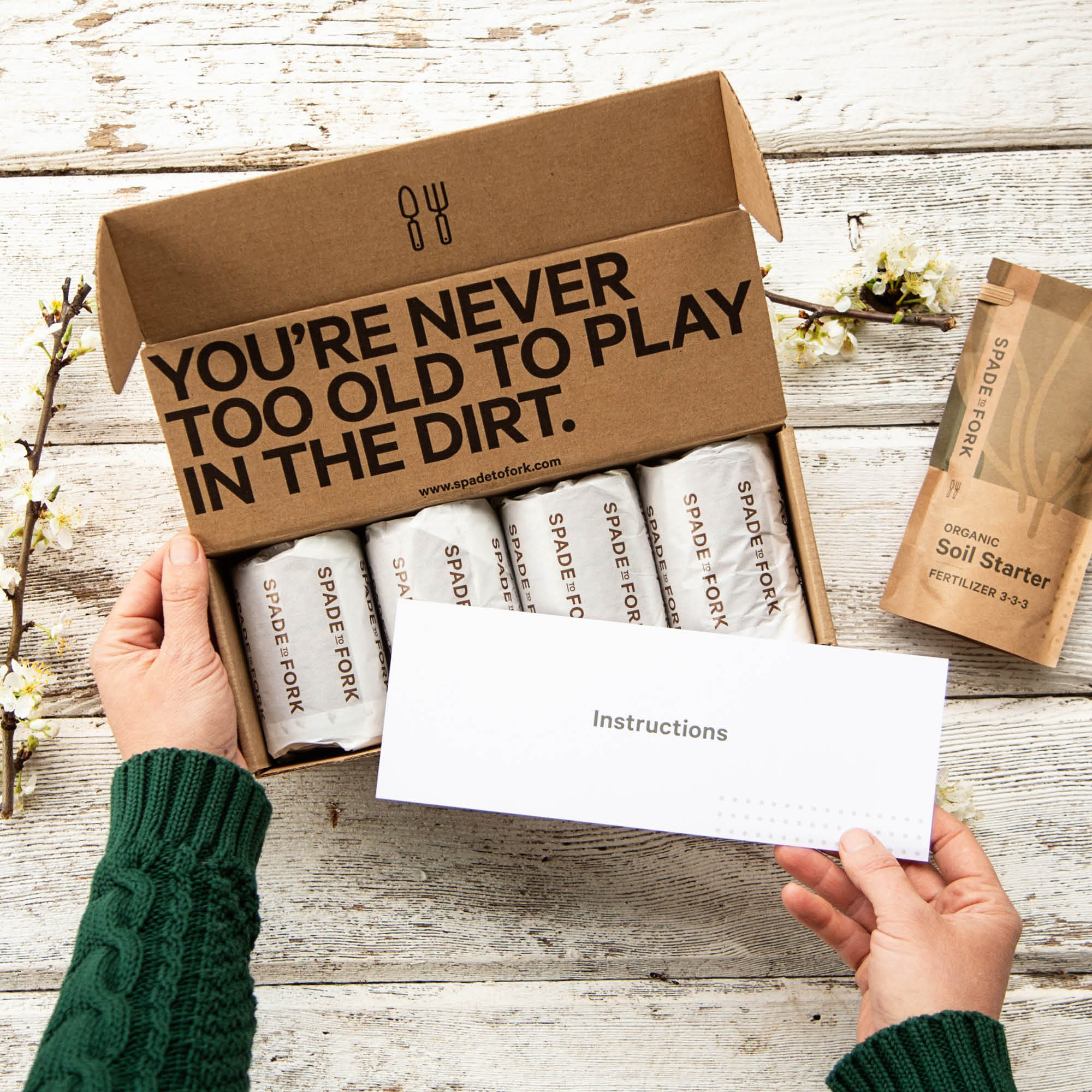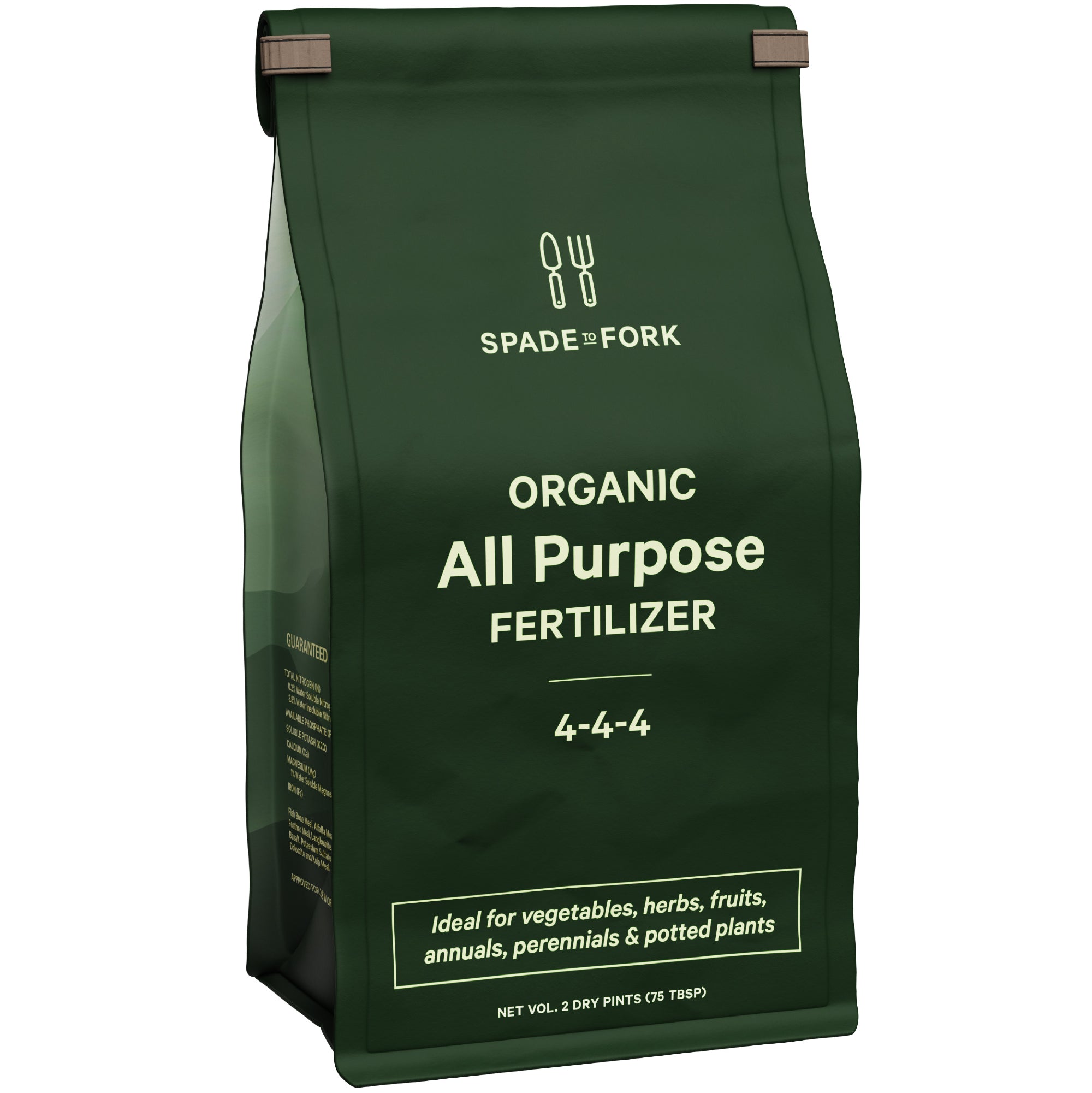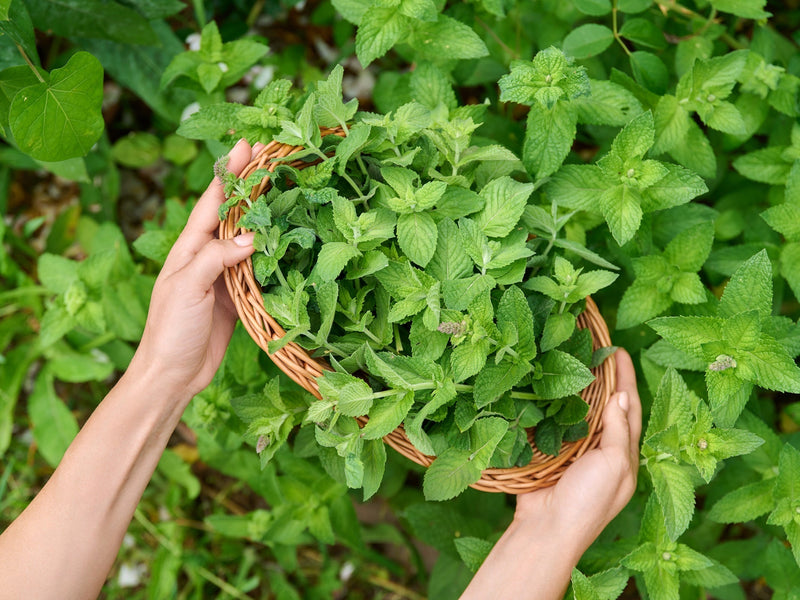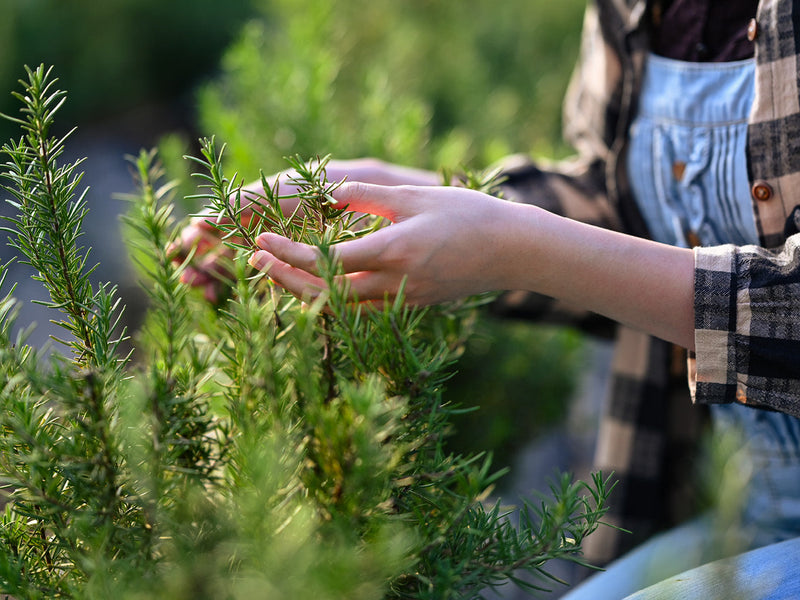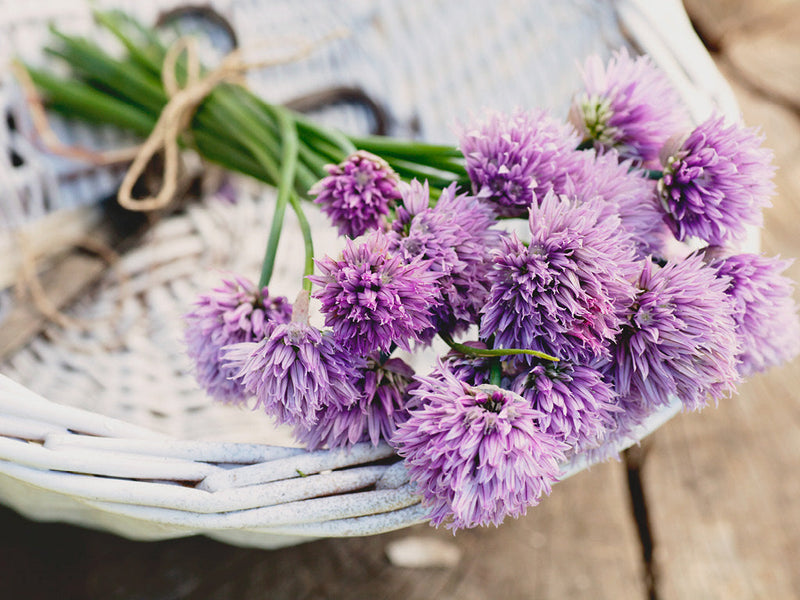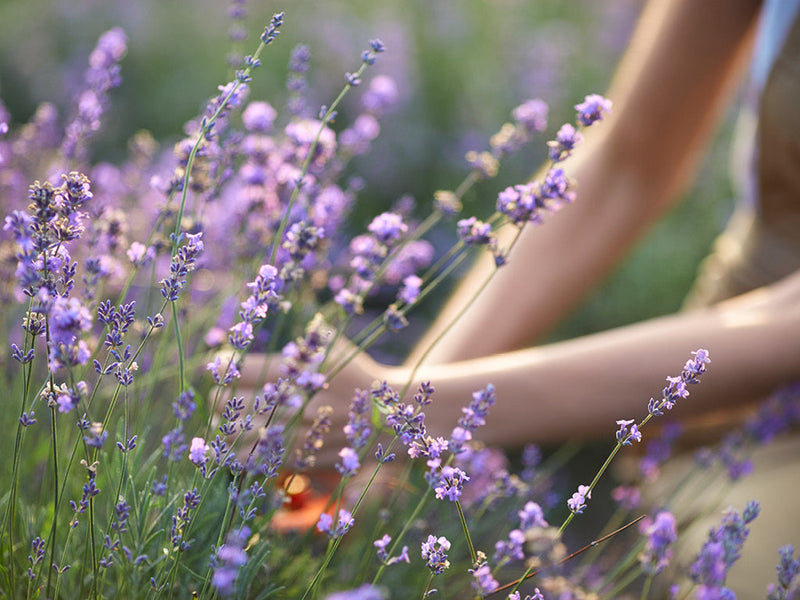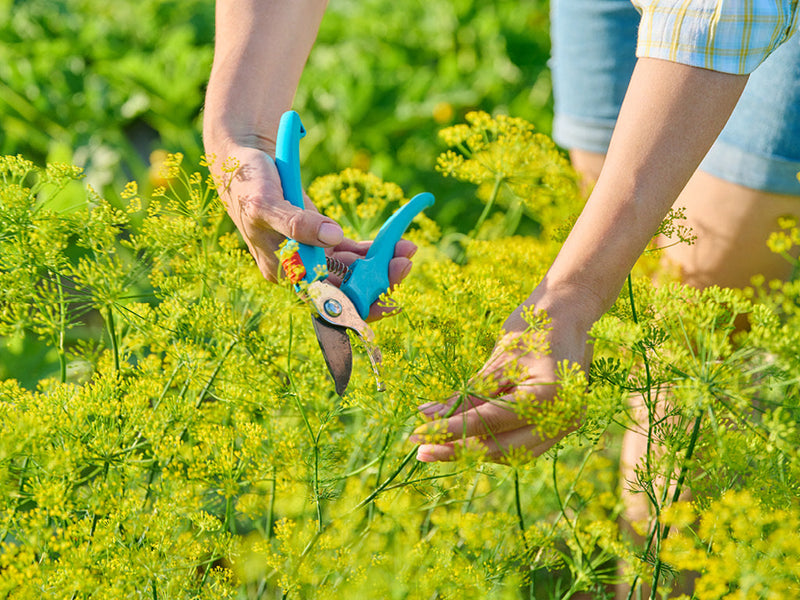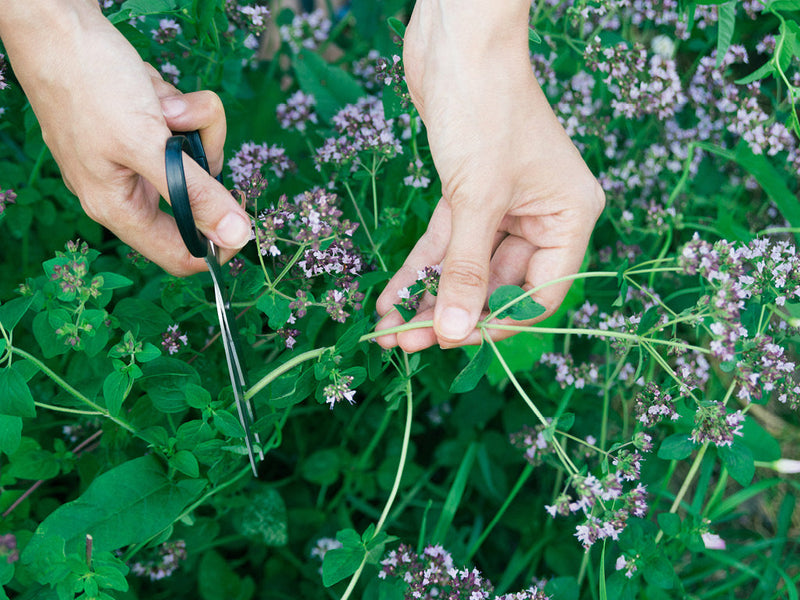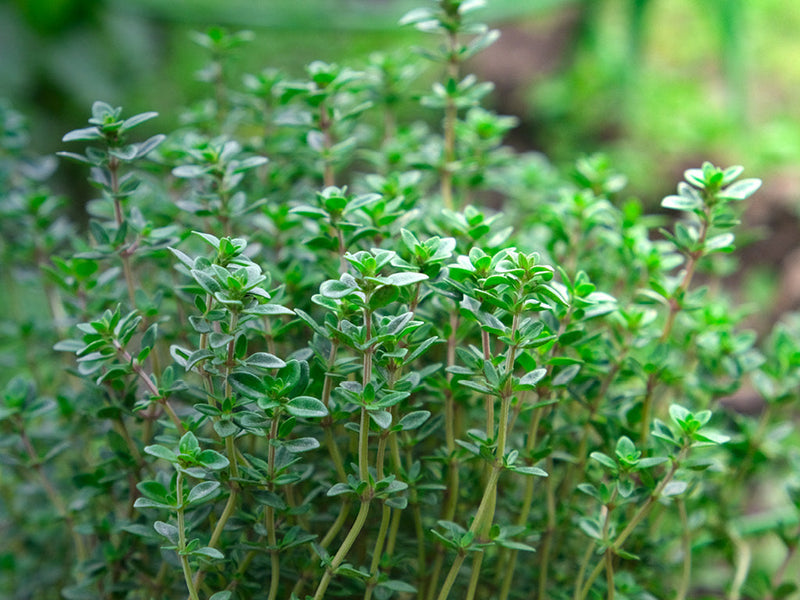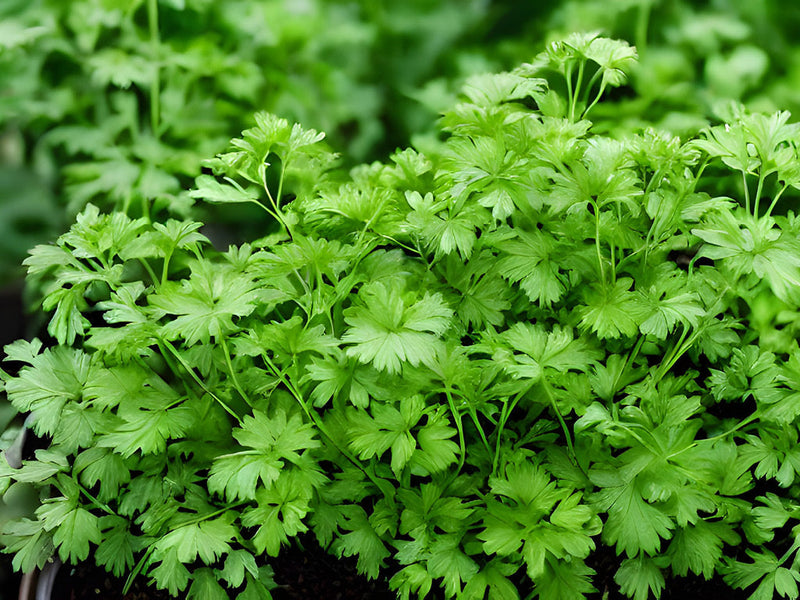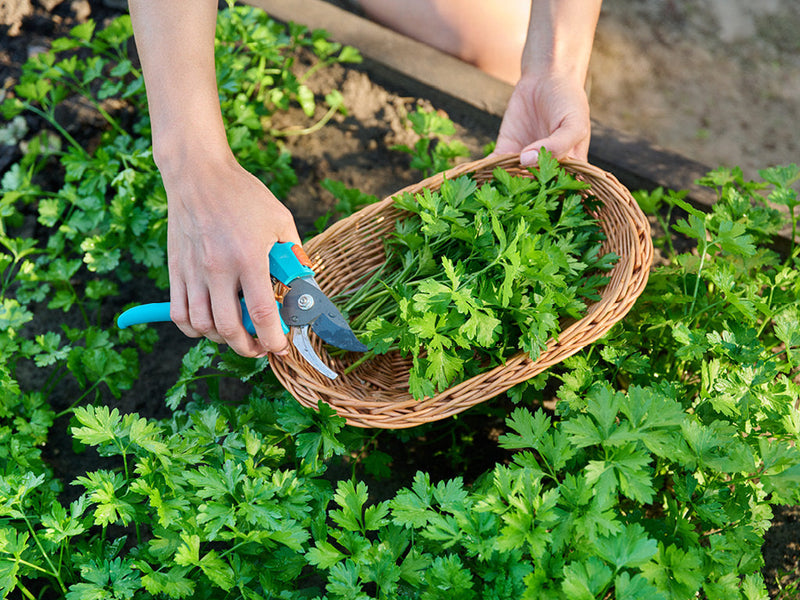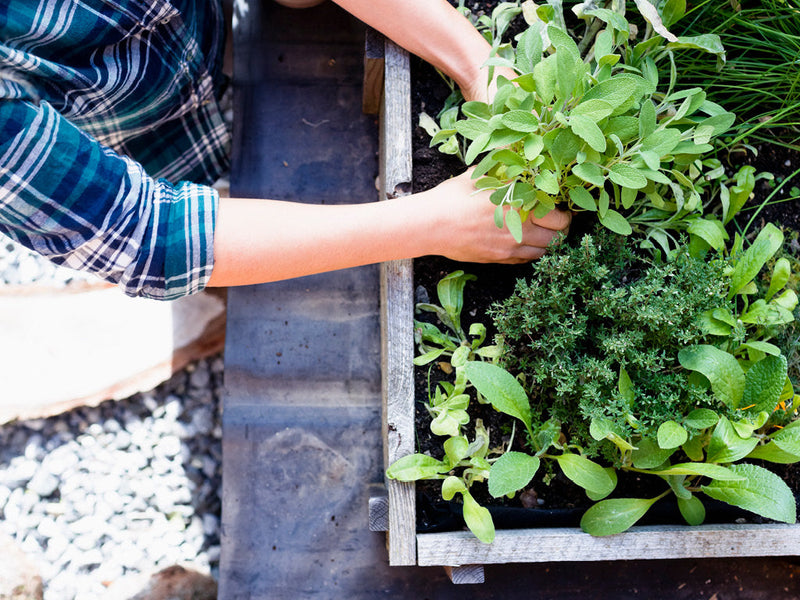
Hi there, I’m Ana from Spade to Fork. I’m so glad you’re here! Basil has been one of my go-to herbs since the very beginning of my gardening journey. It’s one of those plants that’s easy to grow, smells amazing, and adds something truly special to homemade meals. Whether you’re starting seeds on your windowsill or planting an herb patch in the backyard, basil is one of the most rewarding and easiest herbs to grow!
This guide is here to walk you through everything from seed to harvest—and beyond. I’ll show you how to grow vibrant, bushy basil using organic methods, keep it thriving all season, and preserve your harvest so none of that leafy green goodness goes to waste.
Let’s roll up our sleeves and grow something delicious together!
About Basil
Basil (Ocimum basilicum) is a warm-weather annual herb in the mint family. Native to tropical regions of Asia and Africa, it thrives in the summer sun and is a staple in kitchens around the globe. Its sweet, spicy aroma and flavor make it a favorite in dishes ranging from Italian to Thai and beyond.
Basil Varieties
Basil offers a wide variety of types with distinct colors and flavors, from the refreshing aroma of Lemon Basil to the rich hues of Purple Basil. Below are 5 favorites with very different characteristics we love adding to our summer garden, or growing indoors during the cooler months.

- Cinnamon Basil (Ocimum basilicum 'Cinnamon') Cinnamon basil has a sweet, spicy aroma that is reminiscent of cinnamon, clove, and licorice. This herb is known for its sweet and warming qualities. The plant has dark green leaves, violet stems and lilac blooms.
- Genovese Basil (Ocimum basilicum ‘Genovese’) Genovese basil is one of the most popular types of sweet basil and most famously known for its use in pesto. This Italian heirloom has large, aromatic, dark green leaves and lovely edible flowers.
- Thai Basil (Ocimum basilicum var. thyrsiflora) Thai basil is a stunning plant with beautiful purple flowers and a sweet, slightly spicy flavor with notes of anise and licorice. It is a popular herb in Southeast Asia for both its culinary and medicinal uses.
- Lemon Basil (Ocimum basilicum crispum) Lemon basil has bright green leaves and a sweet, citrusy flavor. This basil is more compact than other basil varieties making it great for growing in small spaces.
- Purple Basil (Ocimum basilicum ‘Dark Opal’) Purple basil is a striking herb that adds a pop of color to any garden or dish. Its deep purple leaves have a rich, spicy flavor that is similar to traditional sweet basil but with a slightly stronger taste.
When To Start Basil Seeds
Indoors: If you’d like to get a jump on the season, start your basil seeds indoors 4-6 weeks before the last predicted frost (find out your last frost date here).
Transplant seedlings outdoors once temperatures are consistently 50 degrees or warmer. Remember basil is a frost-sensitive herb and needs warm weather to thrive.
You can also keep basil indoors in a sunny windowsill, under a grow light or in a hydroponics or aeroponics system year round. Check out our Indoor Gardening article for more tips for a successful indoor herb garden.

Outdoors: Direct sow seeds into your garden 2-3 weeks after your last frost when temperatures are consistently 60 degrees or above.
How to Plant Basil
For indoor seed starting, use an organic, sterile, seed starting mix – we use our Organic Compress Potting Soil to start all our seeds. Avoid using raised bed or outdoor potting mixes as they have larger particle sizes that could inhibit germination. Look for a light and fluffy mix that allows delicate roots to easily travel through and has good moisture retention.
For outdoor direct sowing, plant in well draining, but moisture retentive soil amended with compost. Make sure the location gets 6-8 hours of direct sun.
- Plant seeds ¼” depth and lightly cover
- Keep soil consistently moist, but not wet
- For indoors, plant 2-4 seeds per seed cell or 5-10 seeds per 4” pot
- For outdoors, plant 2-4 seeds every 10”
Basil Basic care

Feeding
Basil plants need only light fertilization to excel in your indoor or outdoor garden. Use a balanced organic fertilizer like our 4-4-4 All Purpose Fertilizer to lightly top dress the soil monthly.
Watering
Water soil when it starts to dry out. Basil likes moist soil, but does not like soggy overly wet soil. If your basil plant starts to wilt, this is a good sign it needs more water.
Mulching
For outdoor planting, add compost around your basil plants as a mulch. This will help with moisture retention and improve your soil structure and drainage over time.
Pruning
If you want full and bushy basil plants, pruning is essential. When you neglect to prune your basil plants, they will become long and spindly and go to flower much quicker, shortening their lifespan.
Once your basil plant is 4-6” tall and has several sets of leaves you can start pruning. First prune the top of the main stem (removing some of the leaves as well) to just above a node (a place where two little leaf buds are just starting on either side of the stem). Use your fingernail or a sharp pair of snips or scissors to make the trim.
Harvesting
To keep your basil plant bushy and producing, continuing to prune as you did for the first initial prune, but now on a larger scale. From that first prune, multiple stems were produced. Trim all the new stems back several inches to new sets of nodes. This will in turn produce even more stems. Harvest in this manner approximately every two weeks to keep your basil bushy and thriving!
Enjoy all the harvested basil in your cooking, pestos and salads. If you can’t use it all, I have more tips later in the article about how to store and preserve basil for later use!
Pests and Diseases to Watch Out For
Basil is wonderful at repelling mosquitoes, flea beetles and cabbage worms, but fortunately there are a few pests and insects that love the taste of basil as well as some diseases you want to be sure to avoid.
Common Basil Pests
-
Aphids
The simplest way to get rid of aphids is to wash them off your plants with a strong blast of water. A garden hose is perfect for this job. If they persist, make a homemade organic soap solution to spray on the affected areas. To make the solution use 1 tablespoon organic soap (I use Dr. Bronners Peppermint Castile soap) to one quart of warm water.
- Slugs and Snails
The best way to get rid of slugs and snails is to handpick them out of your garden or use beer traps to catch them. To make a beer trap use a wide and shallow container (empty tuna cans work great). Place the container in the area slugs like to visit and bury the container so only the top rim is level with the ground. Fill the can ¼-½ full. The yeasty, fermented smell of beer will lure the slugs into the can.
Common Basil Diseases
Fusarium wilt, mold, mildew, and other fungus-related diseases pose the biggest risk to basil. Luckily, by using proper watering techniques and planting in healthy soil, you can prevent most of these issues. Here are a few additional tips for preventing and controlling fungal diseases.
- Keep your soil well-drained and not damp.
- Keep the basil leaves dry by not allowing moisture to sit on them for too long. Watering in the morning is best so the sun can dry leaves quickly, rather than watering in the evening when leaves may stay wet overnight.
- Remove infected leaves. If you find diseased leaves remove the section of the plant (or the whole plant if needed) and dispose of it so the disease cannot spread.
Basil Storage and Preservation
The simplest way to store your basil is to put the cuttings into a jar of water (like flowers in a vase). This will stay fresh on your counter for a week or more. For longer term storage, you can freeze basil by simply placing your whole or chopped basil leaves into a ziplock bag and putting them in the freezer. My favorite way to preserve basil though is to make it into pesto and store that in the freezer for later use (lasts up to one year).

Drying basil is another storage option. While dried basil will stay good for up to two years, the drying process removes some of its flavor. To dry basil, spread your leaves on a cooking sheet and place them in the oven on the lowest setting for 2-4 hours. Next, put your dried basil in an airtight container and store it at room temperature.
Companion Plants For Basil
Basil is an excellent companion to many vegetables, herbs and flowers. Growing basil alongside other plants can improve growth and flavor. Basil is also a natural insect repellent protecting those around it with its strong aroma. Here are some of the best companions plants to grow with basil:
Vegetables
-
Tomatoes – Basil is famous for enhancing the flavor of tomatoes and also helps repel pests like whiteflies and hornworms.
-
Peppers – Basil can help deter pests that commonly attack pepper plants, and the two enjoy similar growing conditions.
-
Potatoes – Planting basil near potatoes may help repel certain insect pests, including potato beetles.
-
Cauliflower – Basil’s aromatic oils can help mask cauliflower from pests like cabbage moths.
-
Broccoli – Similar to cauliflower, basil helps protect broccoli by confusing and repelling unwanted bugs..
-
Radishes – These quick growers benefit from basil’s pest-repelling properties and help break up soil around basil roots.
-
Beets – Beets and basil can grow side by side without competing, and basil’s scent helps keep pests at bay.
-
Garlic – Both garlic and basil are natural pest deterrents, and together they make a strong team in the garden.
Flowers & Herbs
-
Oregano – Oregano acts as a ground cover and offers natural pest control alongside basil.
-
Parsley – These two herbs thrive in similar conditions and grow happily without competing.
-
Chives – Chives help repel aphids and other pests while growing nicely with basil.
-
Marigolds – Marigolds deter nematodes and garden pests, making them ideal companions for most herbs, including basil.
Planting basil with the right companions helps create a healthier, more productive garden!
Wrapping It Up
I hope you enjoyed this grow guide and grow lots of bushy and fragrant basil in your summer garden or indoors!
Happy growing!
![]()

